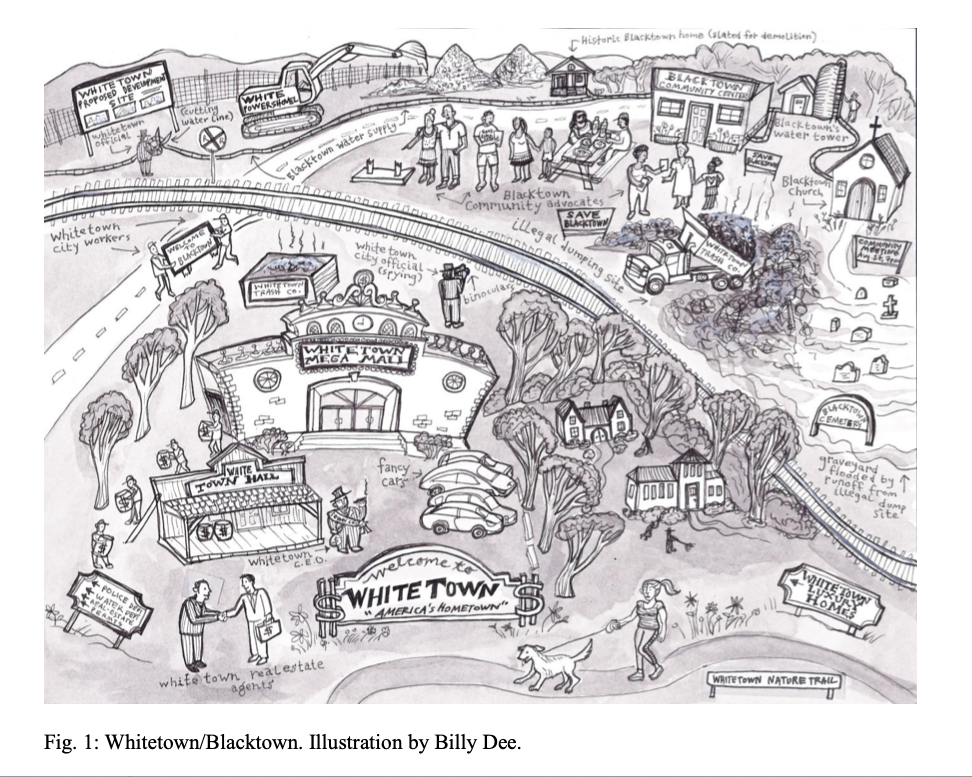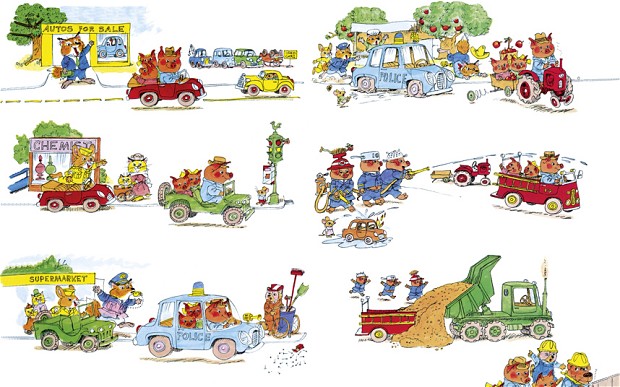New paper out with @daniellepurifoy, titled "What is Environmental Racism For?" This represents the first of two manuscripts, and many more ideas, from our ongoing collaboration on what we call the "creative extraction" of Black towns by white folks. https://www.tandfonline.com/doi/pdf/10.1080/23251042.2020.1790331?needAccess=true
I'm going to explain some backstory here because in some ways this is a first concrete step in a big project I'm very excited about and think can help us reformulate a lot of things about race and place.
five years ago, Danielle was writing about unincorporated Black towns in the South. See her Scalawag series on Black independence in Mebane NC and Whitehall AL, which also involved a collaborative art project with #TorkwaseDyson: https://www.scalawagmagazine.org/2016/08/finding-black-independence-in-mebane/
and also her recent work showing that for Black towns, incorporation isn't protective from environmental disamenities https://journals.sagepub.com/doi/abs/10.1177/0002764219859645
while I was writing about the racial politics and development conflicts in a small Black city in the North taken over by the state of Michigan: https://www.cambridge.org/core/journals/du-bois-review-social-science-research-on-race/article/when-democracy-disappears/99E1C8BA151441ECDEF51569E2B4537C
What we saw in common was the consistency of "existential threats" facing Black places of any scale, whether Urban Renewal, divestment, infrastructure access, or just literally being taken off the map.
these independent Black towns, primarily in the South, were founded as a refuge from white supremacy, as autonomous spaces. See also @freeblackTX's amazing project mapping Texas Freedom Colonies, with over 557 counted so far: https://andrearobertsphd.com/the-texas-freedom-colonies-project/
and it became clear Black independent governance was a primary "threat" to white places--in any form: any organized resistance or stake on the map that could prevent a white town from coming and taking the territory whenever it pleased.
We actually found the site for our case study by looking at white unincorporated places to test our hypothesis that they simply didn't have the same kind of water problems. that's how we found The Woodlands, which looks like this https://www.chron.com/business/retail/article/Makeover-planned-for-Market-Street-in-The-12966079.php
(but you'll have to read the article(s) to get our explanation of the Woodlands' role in all this!)
Once we looked for a Black town nearby, we instantly found Tamina, right next to The Woodlands. In fact, The Woodlands was *built on Tamina's land*, over a century after Tamina was founded. http://taminatexas.org
all the other towns nearby were also built on what was once Tamina, including Shenandoah, which pretends it could be The Woodlands someday. Here's a picture of Shenandoah's pride and primary revenue generator, Portofino Mall
And unsurprisingly once you've looked at several towns in this situation, Tamina has been fighting for twenty years to keep the water rights it had before any other town nearby. No town nearby will agree to sell Tamina water OR allow Tamina to build its own system.
This single community is facing the confluence of multiple forms of environmental racism, enough that we have another whole paper on Tamina coming out soon, elaborating on what we mean by "creative extraction."
But in this paper, we explore how white towns use environmental racism as a tool to enable their own development at the cost of black towns like Tamina. We also argue that water access and hindered development should definitively be seen as a form of environmental racism.
Environmental racism is not just accidental--it is part of a long-term, multi-domain vision that allows white towns to displace the costs of their development, finance their fantasies and suburban sprawl, and keep land cheap "in reserve" for when they're ready to come for it.
Working with Danielle has been extremely generative and for me that's symbolized by how we got Billy Dee, an artist working in Durham, to draw us a representative illustration of "Whitetown" and "Blacktown" for this paper (click to enlarge)
We were inspired by Richard Scarry's "Busytown" which was important to both our childhoods and which we think has unduly shaped grown people's visions of how towns work, hence the visual corrective.
please also stay tuned for "Creative Extraction: Black Towns in White Space," and whatever else we come up with. I may come back later and link to some work that's inspired us. And also thanks to @buellcenter for funding our research! https://power.buellcenter.columbia.edu/initiatives/right-infrastructure
If you've read this far, click this link for the first 50 eprints while supplies last (when they run out, please DM your email address) https://www.tandfonline.com/eprint/GBK3GDI88R9RVBXD9M2B/full?target=10.1080/23251042.2020.1790331

 Read on Twitter
Read on Twitter




